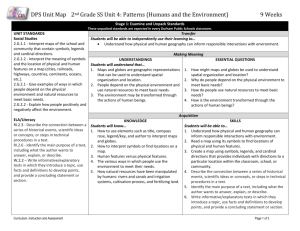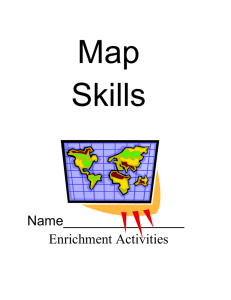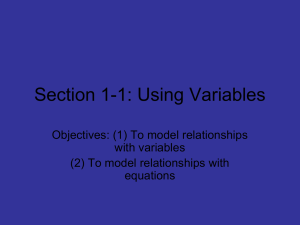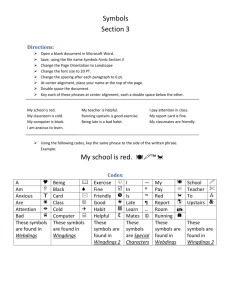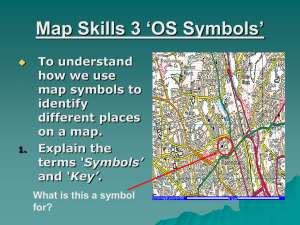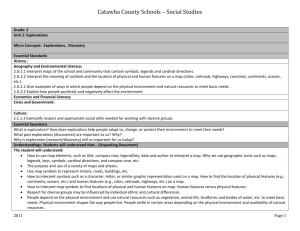SOCIAL STUDIES INSTRUCTIONAL ALIGNMENT Units 7
advertisement
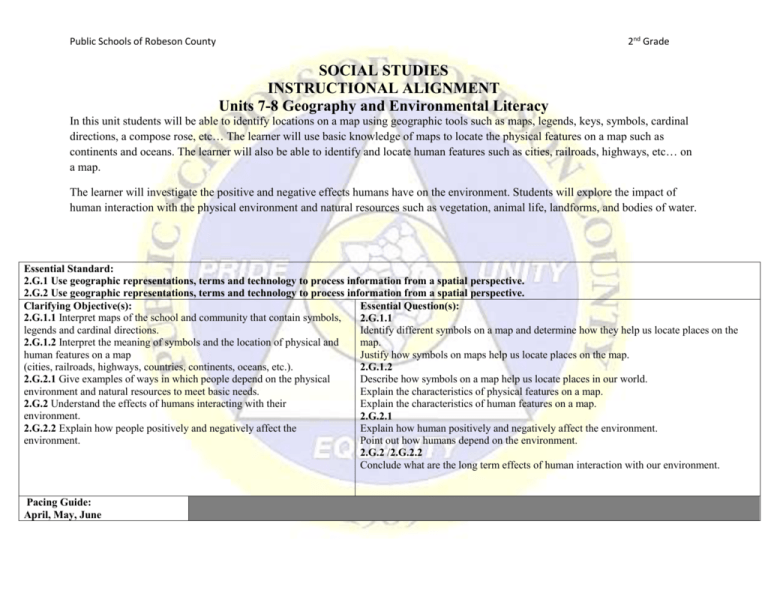
2nd Grade Public Schools of Robeson County SOCIAL STUDIES INSTRUCTIONAL ALIGNMENT Units 7-8 Geography and Environmental Literacy In this unit students will be able to identify locations on a map using geographic tools such as maps, legends, keys, symbols, cardinal directions, a compose rose, etc… The learner will use basic knowledge of maps to locate the physical features on a map such as continents and oceans. The learner will also be able to identify and locate human features such as cities, railroads, highways, etc… on a map. The learner will investigate the positive and negative effects humans have on the environment. Students will explore the impact of human interaction with the physical environment and natural resources such as vegetation, animal life, landforms, and bodies of water. Essential Standard: 2.G.1 Use geographic representations, terms and technology to process information from a spatial perspective. 2.G.2 Use geographic representations, terms and technology to process information from a spatial perspective. Clarifying Objective(s): Essential Question(s): 2.G.1.1 Interpret maps of the school and community that contain symbols, 2.G.1.1 legends and cardinal directions. Identify different symbols on a map and determine how they help us locate places on the 2.G.1.2 Interpret the meaning of symbols and the location of physical and map. human features on a map Justify how symbols on maps help us locate places on the map. (cities, railroads, highways, countries, continents, oceans, etc.). 2.G.1.2 2.G.2.1 Give examples of ways in which people depend on the physical Describe how symbols on a map help us locate places in our world. environment and natural resources to meet basic needs. Explain the characteristics of physical features on a map. 2.G.2 Understand the effects of humans interacting with their Explain the characteristics of human features on a map. environment. 2.G.2.1 2.G.2.2 Explain how people positively and negatively affect the Explain how human positively and negatively affect the environment. environment. Point out how humans depend on the environment. 2.G.2 /2.G.2.2 Conclude what are the long term effects of human interaction with our environment. Pacing Guide: April, May, June 2nd Grade Public Schools of Robeson County Unit of Study Use geographic representations, terms, and technology to process information from a spatial perspective. Understand the effects of humans interacting with the environment Major Concepts Location Physical Attributes Instructional Task 2.G.1.1 1) Recall directions (North, South, East, West). Landforms 2) Identify the parts of a map. 3) Use the key and compass rose to find locations on a map or chart. 4) Interpret maps, charts, and pictures. 5) Explain the way maps are read including, symbols, legends and cardinal directions. Essential Vocabulary Pre: Map, symbols, directions, ocean, mountain, country, needs, recycle, pollute Non Fiction Books Create a map of my school, home and community. Encyclopedias Digital Resources: 1) Identify symbols on the map. 3) Classify the different types of symbols and landforms. 2.G.1.1 Current: Legend, atlas, key, Compass rose, cardinal directions, human features, physical features, landform, physical environment, natural resources, human interaction Introductory: North East, South East, North West, South West, continent, vegetation, availability, ecosystem, impact, conserve Sample Assessment Prompts Text Resources: Text Books, Hartford Series 2.G.1.2 2) Give examples of various symbols landforms. Instructional Resources Memio Board Lessons Develop a map to demonstrate map skills. Identify key elements on a map. ( title, author, legend, compass rose, Cardinal directions) Discovery-www.discoveryeducation.com Distinguish the use of different maps or atlases. United Streaming- 2.G.1.2 www.streaming.discoveryeducation.com Interpret symbols that represent items on the map. PBS Kids- Identify physical/human features on a map. www.pbs.org Literary Connections: Compare the differences between physical and human features on a map Mapping Penny’s World 4) Determine the differences between symbols, human and physical features on the map. 2.G.2.1 by: Loreen Liddy Name natural resources in our world. 2.G.2.1 Geography from A-Z By: Jack Knowlton Public Schools of Robeson County 1) List basic human needs. 2) Discuss characteristics of our environment. 3) Summarize how the environment meets human needs. 4) Give examples of ways in which people depend on the physical environment and natural resources to meet basic needs. 2nd Grade Compare and contrast the positive and negative impact people have on our environment. Justify how the environment helps to meet our basic needs. Role play the relationship between humans and their environment. 2.G.2 /2.G.2.2 2.G.2 /2.G.2.2 Recognize the impact people have on the land both negatively and positively. 1) Describe what a physical environment is. Discuss how people can change the environment. 2) List way humans affect the physical environment. 3) Design a diagram to represent various ways to recycle. 4) Compare ways humans affect the environment both positively and negatively.





